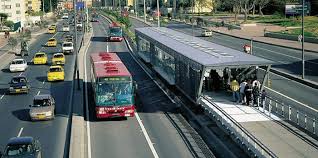In the next few months, the government through the new parastatal Nairobi Metropolitan Area Transport Authority, NAMATA, will be implementing a BRT system on the Kenyan roads. This exercise will directly impact four counties namely: Nairobi City, Kiambu, Kajiado, Machakos and Murang’a.
For years, the matatu industry has descended into chaos, making it the ultimate mark of a third world nation. The main concerns have been unreliability in terms of availability, insecurity with people getting attacked by drivers and touts every other day, unregulated fares and the utter disregard for promptness where matatus stop every three seconds to pick up passengers. Anyone who has lived in Nairobi can tell you about the mad driving skills of matatu drivers that have you whispering silent prayers all the way to your destination.
So first, how did we get here? As I recently learned from a TEDx talk by Shivachi Muleji of Taxify, it wasn’t always the case until the 1990s when the industry was privatized and the buses were no longer solely owned by the government. Over the years, various Ministers of transport have tried to bring some sanity into the industry to no avail.
However, with this new rapid transport system, the matatu industry is about to feel the shock. Currently, NAMATA is in the process of implementing an express transport bus system similar to the one used in Bogota, Colombia and a step ahead of what is being used in Tanzania, ‘The Mwenda Kasi”. This system will simply involve having high capacity buses on an express road while other vehicles beat it out with traffic on the other side of the road. This is bound to be the much-needed solution for many Kenyans who spend hours in traffic every morning and evening.

On this implementation, regular everyday matatus will have minimal chances of survival. So what happens now?
The Tech Revolution in the Matatu Industry
As compared to other African markets, Kenyans love their convenience and are happy to spend more for it. This explains why the on-demand taxi industry in Kenyan cities is blowing up as compared to cities like Dar-es-Salaam. With that, the only survival for the matatu industry is a complete tech-anchored overhaul. However, please note that I am personally extremely opposed to small 14-seater matatus as they are an environmental nuisance. Buses with larger capacities, however, reduce the carbon footprint which is the ultimate goal!
Imagine being able to know who your driver is, where your bus is, where your common pick-up point is, having direct routes that don’t have you going into the city center, being able to do mobile money payments even in advance and even being able to predict what time you will be getting to your stop. All these are possibilities, with the right execution, and go-to-market strategy.
The big question, however, becomes, will this on-demand matatu work? Yes, any system that is able to address the worst challenges associated with public transport while still maintaining what is good about the system such as fair pricing, easy accessibility and multiple but relevant stops, will effectively save the matatu industry! Best of all, with there being a similar problem across most African nations, this is a solution that is implementable across the board.
Now that would be real competition for the on-demand taxi services!

Leave a comment